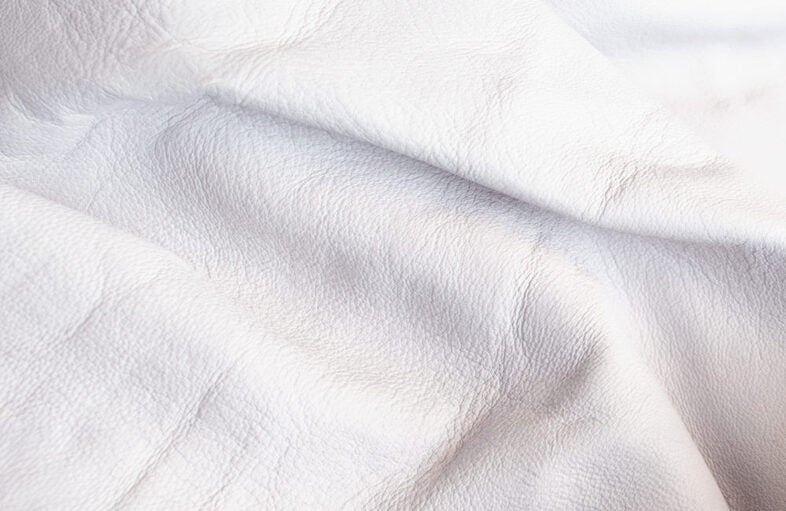
Glove materials
Different kinds of materials are used in our gloves to create maximal performance and protection. The choice of material depends on the need and requested properties.
LEATHER
Leather is a natural material and adapts to the surrounding temperature and environment. There are different kinds of leather and these different leathers has different benefits depending on the animal and its origin and conditions.
If there is a need for a really durable glove cow leather is to prefer. This is the thickest leather and withstand heat but also moisture quite well.
When a glove that still is durable but shall be used in dry environments is needed, a glove with pig leather is a good choice. The pig leather has small holes from the pig’s bristle which allows the air to pass through.
Goat leather is soft and pliable but still quite durable. It’s a thinner leather and therefore a good option when high dexterity of the glove is required.
Cow- and pig leather can be split into several layers. The inner layer is called split leather. The split leather has an irregular and rugged surface that insulates and gives a good grip. It is quite porous and doesn’t withstand moisture well. Grain leather, on the other hand, is the outer layer of the leather and it’s more effective against moisture. Split leather gives better protection against heat than grain leather and are often used in heat protection and welding gloves.
SYNTHETIC LEATHER
Synthetic leather can have the same look as natural leather and, partly, the same properties. There are two kinds of synthetic leather:
Polyurethane(PU) laminated on a very thin polyester or polyamide. This material is thin but still durable with good grip and water repellant surface. It has a grain leather appearance or a surface with a pattern design.
Polyurethane(PU) fiber mixed with polyester or polyamide into a non-woven material. It is soft and durable with high breathability. It has a split leather appearance.
PU
PU (Polyurethane) can be used both as coating on a knitted glove liner and as coating on thin textile materials. It is often used as a leather imitation, then it’s called synthetic leather. PU is a thin and pliable coating which gives good dexterity, good dry- and wet grip and is still flexible at low temperatures.
PVC
PVC is a plastic. Gloves in PVC has good durability and a good grip in both dry and wet environments. It protects well against several water soluble chemicals but has a limited protection against organic solvents.
NITRILE
Nitrile is a synthetic rubber. It is very durable and gives good grip in both dry, wet and oily environments. During the production process of foamed nitrile the solvent used evaporates and small holes are formed in the coating. These small holes allows water and vapor to pass through and makes the glove very flexible and comfortable. Nitrile withstands both oil and solvents.
LATEX
Latex is natural rubber. It has very high elasticity, high durability and very good dry and wet grip. The resistance against alcohol and water soluble chemicals is high. Latex contains a natural protein which can cause allergic reactions for sensitive persons during both production and use.
NEOPRENE / CHLOROPRENE
Neoprene is the brand name for Chloroprene. Chloroprene is a synthetic rubber material with good heat isolation properties. It has also good protection against oil, fat, organic hydrocarbons and acids when it comes to chemical protection.
COTTON
A natural textile fibre with good durability/strength and high absorption ability. Doesn’t melt when ignites which make cotton suitable as lining material in welding gloves.
COATING
A seamless knitted work glove can be coated by different materials like nitrile, PU, latex or PVC. There are different levels of coatings depending on requested properties: Palm dipped, knuckle dipped, fully dipped, fingertip coated and/or dots in the palm area. These different levels of coatings depends on how deep and in which angles the knitted liner has been dipped in the coating bath. A fully dipped glove has coating all the way up to the cuff while a fingertip coated glove has coating only on the fingertips.

